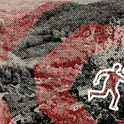Cabernet Franc is often thought of as the poor relation of the Cabernet family—its progeny, Cabernet Sauvignon, has until now stolen the limelight. But things may be about to change. Many New World winemakers are beginning to realise the difficulties of making a great wine with Cabernet Sauvignon, given the growing conditions and climates of the regions where they work. Brand recognition notwithstanding, Cabernet Franc may be a better bet.
Cabernet Franc is more versatile than its majestic offspring. It can be grown in cooler climates and the wines it produces are less fiercely tannic when young. Once thought of as a grape for blending—to add a silky texture and a heady perfume of violets to Bordeaux blends—it is now increasingly seen as a single varietal. The Loire Valley has long been home to several celebrated Cabernet Franc wines: the pale, fresh strawberry-sweet wines of St Nicolas de Bourgueil; the plumper, earthier wines of Bourgueil; the elegant wines of Saumur-Champigny; and even the slightly austere wines of Chinon. Ranging from those that are grassy and leafy on the nose to those that have earthy strands of mushroom, beetroot and black olive, the Loire has set the standard for Cabernet Francs, as it once did for Sauvignon Blancs with Sancerre and Pouilly-Fumé.
Just as Sauvignon Blanc found new expression when transplanted to New Zealand, we are beginning to see new sides of Cabernet Franc in other parts of the world. Cooler growing conditions are found not only in Europe but also at high altitudes where the fruit can fully ripen while guarding its acidity and freshness as the temperature drops at night. Argentina, Chile, South Africa and Brazil are starting to make good headway with it. In many of these regions it may be their best varietal.
Increasingly grown in Argentina’s Mendoza region, for example, and to the southwest in the Uco Valley, the grape retains its grassy freshness here on the foothills of the Andes, without any of the vegetal character that can creep into unripe Cabernet Franc. The dense, ripe fruit flavours of black cherry and sweet tobacco can fill the palate, while the nose still shows distinctive Cabernet Franc notes of violets and graphite. In a country famed for Malbec, it’s interesting to hear Nicolas Catena’s winemaker, Alejandro Vigil, opine that Cabernet Franc could be the future for Argentina. Bodega Catena Zapata are making a top of the range wine in the Uco Valley. It is rich and heady but the lavish oak—and it is very good oak—tends to smother the fresh fruit underneath. As confidence grows in the varietal and the public come to accept it, winemakers need to let the fruit speak for itself. I admire the daring of French born John Du Monceau, of the Atamisque winery in the Uco Valley, whose Serbal range of wines are entirely unoaked. The violets are there on the nose, and the juicy black fruits and leafy character of Cabernet Franc shine through. A more concentrated style of wine can be found on each coast of the United States, in New York State’s Finger Lakes and the cooler region of Carneros in Napa Valley. As a sign of just how versatile the grape is, in Canada’s Niagara escarpment, Cabernet Franc is made into delicious raspberry-flavoured ice wine.
Will the public learn to love these wines? The new wave of Cabernet Franc single varietals are already attracting attention in wine circles, with many examples winning plaudits. So forget those international-style Cabernet Sauvignons that so many winemakers think they have to make to satisfy public taste. Search out Cabernet Francs and watch them develop. This is just the beginning.

Wine: Cabernet Franc's time to shine
Will the public learn to love these wines?
September 16, 2015











